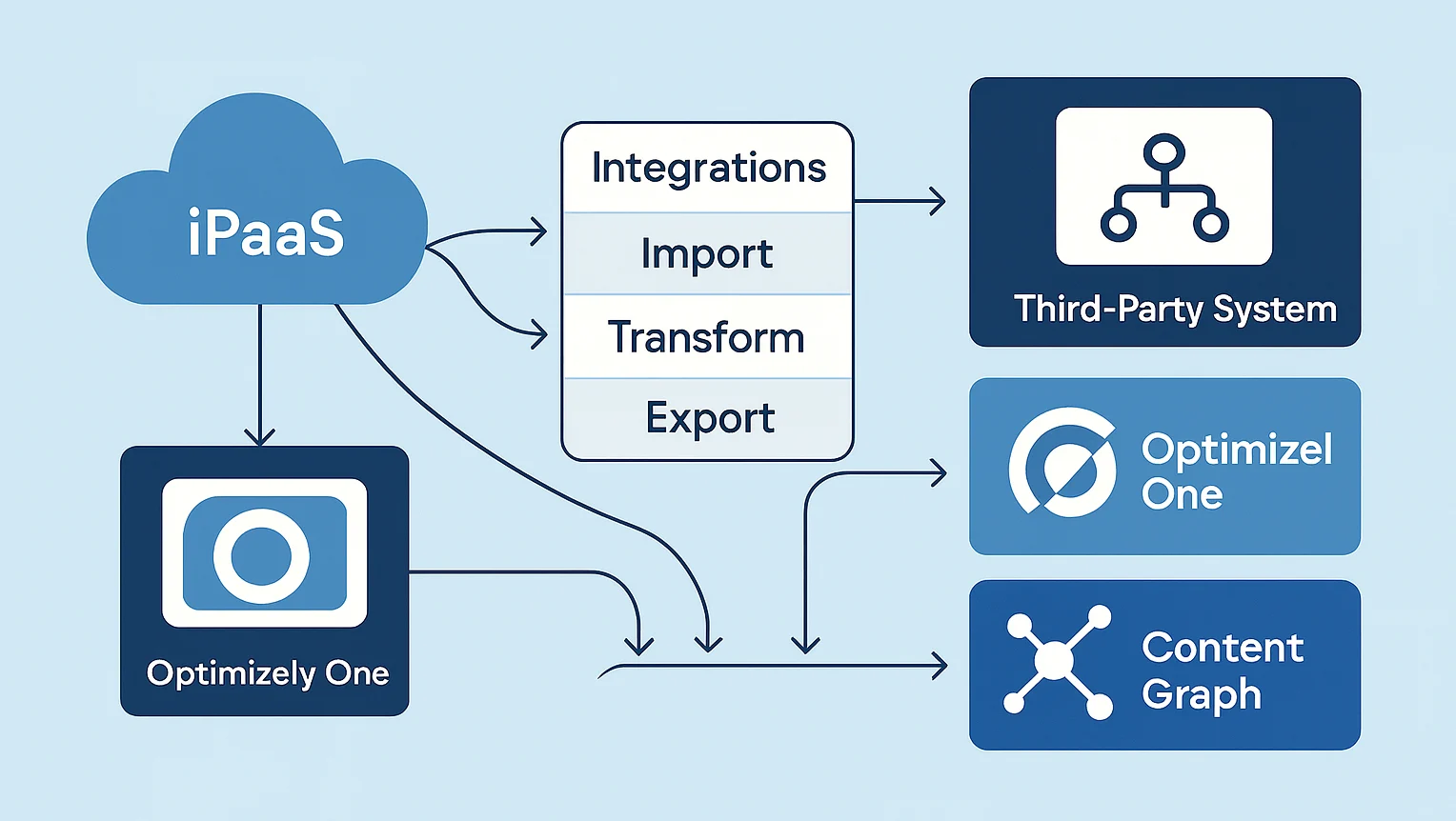
Optimizely Connect Platform (OCP): Connecting Systems Across the Optimizely One Ecosystem
Optimizely Connect Platform (OCP): Connecting Systems Across the Optimizely One Ecosystem
When Optimizely announced the Optimizely Connect Platform (OCP), it marked an important step towards simplifying the integration between Optimizely One and third-party systems. For years, developers have built clever integrations between Optimizely products and third-party services, but those efforts often relied on bespoke connectors or fragile API bridges. OCP changes that, offering a standardised, managed platform for connecting systems, syncing data, and extending Optimizely’s reach.
For developers, it’s a platform designed to simplify integration and enable extensibility across Optimizely’s suite of digital experience tools.
What is the Optimizely Connect Platform?
At its core, OCP is an integration platform-as-a-service (iPaaS) built to connect external systems to the Optimizely One ecosystem. It builds on the Connect Platform for ODP, extending its capabilities to other Optimizely services such as Content Graph and Commerce.
Through OCP, developers can import, transform, and export data between systems using either prebuilt apps from the OCP App Directory or custom-built apps designed for specific needs. Optimizely provides the managed infrastructure — a serverless compute environment — so developers can focus purely on logic and data flow without worrying about hosting or scaling.
A Platform for Extensibility
The Optimizely Connect Platform provides a consistent, scalable way to build and manage integrations. Whether it’s syncing customer profiles from a CRM into ODP, pushing product data from Commerce to a DAM, or feeding analytics to a search index, OCP handles the heavy lifting behind the scenes.
Every integration runs within a managed, Optimizely-hosted environment, complete with APIs, SDKs, and a command-line interface (CLI) for managing and publishing apps. This consistent architecture means developers can trust their integrations will run reliably, with built-in observability and security.
Beyond the core runtime, OCP includes a dedicated App Marketplace — a growing catalogue of public and private apps that allow Optimizely customers to plug into new systems with minimal setup.
App Models: End-to-End vs Data Sync
Optimizely Connect Platform introduces two main app types: End-to-End Apps and Data Sync Apps. Each serves a different purpose depending on how much flexibility or control you need.
End-to-End Apps
End-to-End Apps are ready-to-go integrations between two defined systems. They handle authorisation, schema creation, and data transfer automatically. Once installed from the App Directory, users simply connect their accounts and let the app manage the sync process.
These apps are ideal when you need a reliable connection for a common use case, such as syncing data between Optimizely Content and an external DAM or CRM.
Data Sync Apps
Data Sync Apps, by contrast, offer much greater flexibility. Developers can define the app as a source, destination, or both — configuring exactly how data should flow. Within the Sync Manager, users can map fields, define schedules, and control how data is moved and transformed.
OCP supports both real-time syncs (for instant updates) and scheduled syncs (running at defined intervals from every 10 minutes to two days). This flexibility makes it easier to manage complex, multi-system data relationships while keeping performance predictable.
The Sync Manager and App Library
From a user’s perspective, the Sync Manager is the heart of OCP. It provides a single interface for managing integrations — specifying sources, destinations, mappings, and schedules. For integrations involving Content Graph, OCP can even generate the schema automatically.
The App Library makes discovery simple: choose an existing app from the growing catalogue or deploy a private, bespoke app built for your organisation.
Optimizely is already extending its integrations to cover more areas, including search (Coveo and Algolia), commerce, and digital asset management. It’s clear that OCP will play a central role in connecting these experiences.
Licensing and Availability
OCP offers two licensing tiers:
Free Tier – Supports real-time sync and allows developers to create and publish public apps.
Paid Tier – Adds support for the OCP database, scheduled syncs, and the creation of private apps with access to advanced features such as file ingestion, webhooks, and REST APIs.
As of July 2025, the Free Tier is generally available (initially for SaaS CMS), with the Paid Tier already open to customers building more advanced or internal integrations.
The Future of OCP
Optimizely has a clear roadmap for OCP’s evolution. Upcoming features include conditional logic, data filtering, and the ability to delete transient data — all aimed at making the platform more adaptable for complex workflows.
OCP is also becoming a core pillar of Optimizely’s composable strategy, with internal teams already building official apps to connect products within the Optimizely ecosystem. As more partners and developers contribute their own apps, the potential for innovation grows exponentially.
Closing Thoughts
For developers and digital teams, the Optimizely Connect Platform represents a significant shift. It offers a structured, scalable way to connect systems, share data, and extend the Optimizely platform — without reinventing the wheel each time an integration is needed.
As OCP matures, it’s set to become a foundation for how Optimizely customers build truly connected digital experiences.
The best part? This is just the beginning. In my next post, I’ll look at how to build your first OCP application — walking through the CLI setup, app scaffolding, and best practices for publishing your own integrations.